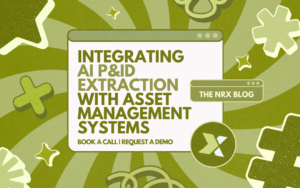According to a McKinsey report, AI automation could displace about 30% of the tasks in 60% of all occupations across global industries by 2030. This striking forecast underscores the transformative power of AI, particularly in eliminating tedious work while unlocking new levels of efficiency and innovation.
Artificial Intelligence (AI), defined as the simulation of human intelligence processes by machines, has moved beyond theory into impactful applications. Today, organizations are embedding AI into EAM platforms such as IBM Maximo and Oracle EAM. This integration optimizes maintenance schedules and functional locations (FLOCs) while significantly reducing the burden of manual workflows across industries.

AI in Healthcare, Finance, and Logistics
In healthcare, AI is making historic strides. For instance, Mayo Clinic employs AI algorithms to automate patient triage. This change expedites diagnosis and treatment while ultimately reducing clinician administrative workload. Furthermore, hospitals increasingly rely on AI to optimize resource allocation, track patient recovery, and predict critical care needs in real time. These AI-powered workflows not only save time but also enhance patient outcomes significantly.
Similarly, the finance sector is undergoing a profound digitalization. JPMorgan Chase, for instance, utilizes a program formerly called COIN (Contract Intelligence) that reviews commercial loan agreements in seconds. Previously, this task consumed around 360,000 hours of manual work annually. Financial institutions are also using AI to automate fraud detection, and streamline regulatory reporting.
Moreover, the logistics industry is experiencing a revolution driven by digitalization and migration to AI-centric systems. DHL has deployed AI-powered workflows across their global supply chain to forecast demand, optimize routes, and automate warehouse operations. Through strategic AI migration initiatives, DHL reported a reduction in operational costs within two years. Similarly, FedEx is utilizing AI for dynamic route planning, which leads to faster deliveries and lower fuel consumption in return.

Digital Twins and EAM Transformation
In asset management, integrating AI with digital twin technologies allows companies to simulate the performance of physical assets in virtual environments. As a result, they can anticipate failures and schedule proactive maintenance, effectively migrating from reactive to predictive operational models.
Organizations migrating to AI-driven systems, especially through EAM migrations or upgrades to platforms, are seeing undeniable returns on investment. Furthermore, platforms such as CMMS and digitalized systems have drastically improved asset lifecycle management, which result in lower downtime and higher equipment reliability.
The Broader Benefits of AI
Importantly, the elimination of manual work extends far beyond productivity gains. AI strengthens regulatory compliance and boosts worker satisfaction by freeing employees from repetitive tasks. For instance, AI-driven EAM platforms now automatically generate PM schedules based on real-time asset data, rather than relying on error-prone spreadsheets.
With the right AI strategies, companies are not just digitalizing operations. Strategies such as embedding machine learning models into asset management systems play a key role. Additionally, utilizing digital twins to simulate FLOC changes helps organizations build resilient infrastructures that can adapt to market changes and future challenges.
As businesses continue to migrate and digitally transform, AI’s role in various industries will only expand. Thus, companies that recognize this monumental shift and embrace AI-powered workflows will be far better positioned to navigate an increasingly data-driven landscape.
Integrating AI P&ID Extraction with Asset Management Systems
ISO 14224 vs Other Maintenance Standards: What Sets It Apart?
Building Trust in Your Asset Data: Strategies for Governance
Share this article




